This post contains affiliate links. We earn commissions if you purchase products from retailers after clicking on a link from our site. As an Amazon Associate, we earn from qualifying purchases.
Ever noticed that if you play C on the piano and C on the trumpet that they sound different? How are you supposed to tune the trumpet with the piano? Let’s find out.
Three easy notes to help tune:
- Trumpets can tune to A (1st and 2nd valves pressed) while piano plays G
- Trumpets can tune to G (open) while piano plays F
- Pianos can play Bb to match the C (open) position on the trumpet
- Trumpets can tune to D (1st and 3rd valves or just 1st valve) while piano plays C
Those are some easy ways to tune the trumpet to the piano, but what does a C or F on a piano even look like? I’ll show you and also explain which notes on the piano are best for tuning the trumpet.
How To Tune The Trumpet With The Piano Including Which Notes Are Best
The steps are simple, but it’s nice to have more detail. I’ll go through the steps using the best note on the piano for tuning the trumpet for beginners and then I’ll jump into detail and other note options (in case you’re not the one playing the piano).
- Hold The Trumpet With Your Right Hand (this step isn’t necessary if you are tuning to an open position. If you are tuning with an open position you can hold the trumpet with your left hand.)
- Play F (the Reference Note) On the Piano
- Play G on the trumpet with no valves pressed
- While still playing G, with the opposite hand, adjust the tuning slide of the trumpet until the pitches are matched
Seems simple right? Well… I understand it’s a little tricky to get the hang of. I remember tuning in band was a bit difficult–especially if you’re in a big band room and one poor person is almost jumping on the piano keys so they can be heard over all the saxophones and trombones. In this case, you don’t always get to choose the reference note on the piano that’s being played. Don’t worry, I’ll show you what to do.
Step One: Hold The Trumpet With Your Right Hand
Tuning requires some coordination.
If you are tuning the trumpet to an ideal note (open position) then you can just hold the trumpet with your left hand as normal.
If, however, you are trying to tune to the piano while it’s playing C or G you have to hold the trumpet with your right hand in a special way that allows you to press the valves while you adjust the tuning slide.
In order to hold the trumpet with your right hand you have to use the hook that’s on the main bore of the trumpet with your pinky finger (perhaps you’ve always wondered what that was used for). Then, you can hook your thumb underneath the main bore of the trumpet for extra stability.
See below for pictures of holding the trumpet with your right hand.
Step Two: Play The Reference Note On the Piano
Any note on the piano will work for tuning the trumpet. The trumpet trumpet has to go up 2 half steps higher to match the piano.
For example: if the piano is playing C, the trumpet has to play D–if the piano is playing F, the trumpet plays G, etc.
However, there are some notes that are better for the trumpet to tune to. Ideally you want to tune the trumpet in an open valve position because the valves (especially valve 3) can impact the tuning of the instrument slightly.
So, let’s go from best to worst notes to tune to the piano.
Concert F: Best
Concert F on the piano is G (open position) on the trumpet.
Probably the best note for tuning the trumpet is F on the piano. Pianos are in “Concert” tuning. So when you hear the word Concert F, it just means F on the piano.
Concert F is especially good for beginner trumpeters to tune to because it’s in a range that most beginner trumpeters can play and it’s not too low. It’s best to tune to the middle of the trumpeters range (range meaning how high the trumpeter can play), because as the player goes higher or lower, they tend to go out of tune, so it’s best to tune in the middle.
You can also hold the trumpet with your left hand while tuning. Yay!
Here is F on the piano:
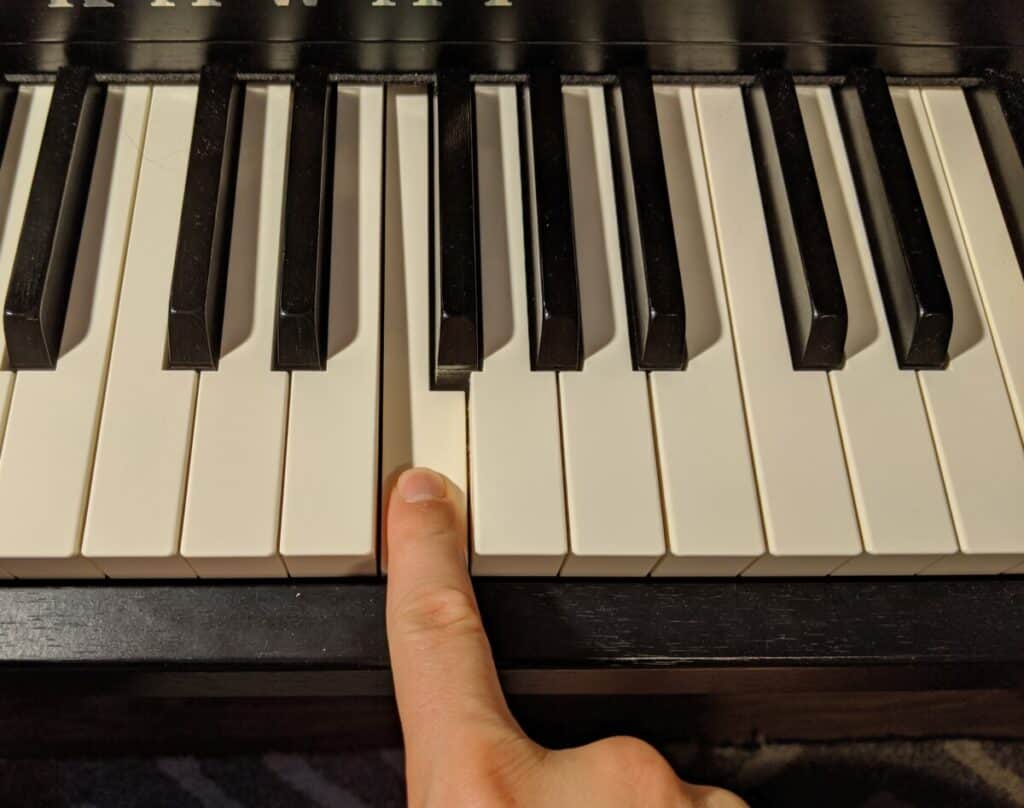
By the way, looking for recording equipment and musical instruments? Check out Sweetwater.com for microphones, monitors, audio interface or any other recording gear that you could ever need. (Affiliate Link)
This matches the note G on the trumpet which has no valves pressed, and looks like this:
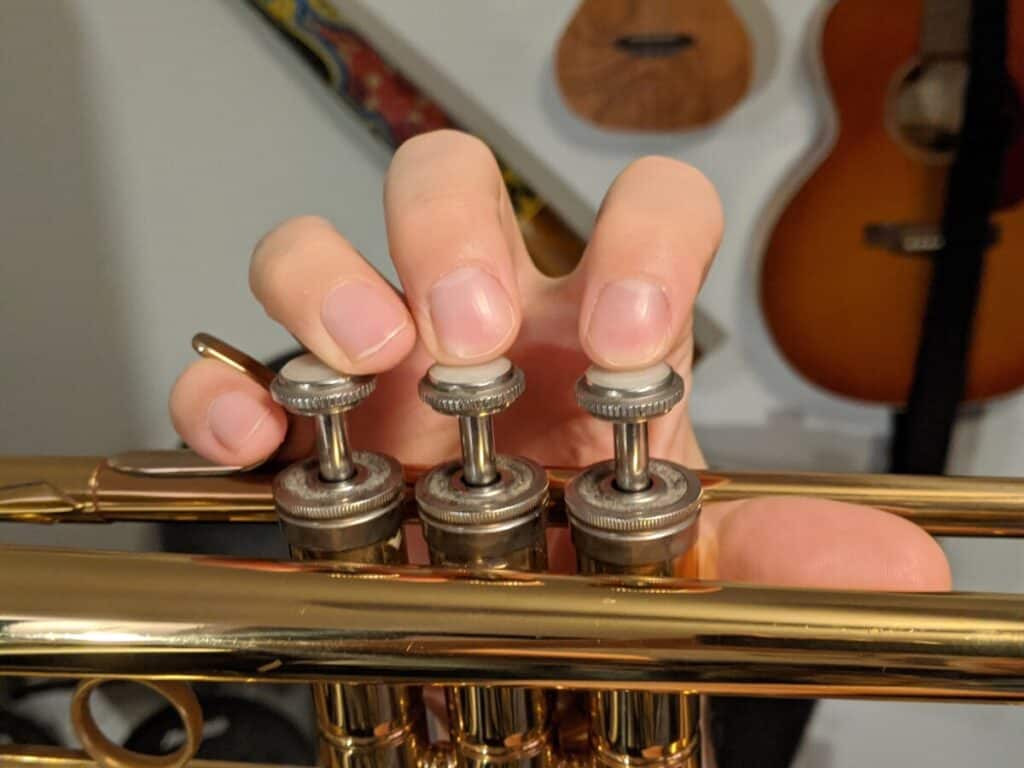
Concert G:
Concert G on the piano is A (valves 1 and 2) on the trumpet.
This is not a bad note to tune to because it’s in a good range. It’s not as ideal because you have to hold down two valves which isn’t as easy to do with your right hand.
One downside is you’ll have to hold the trumpet with your right hand–while not too hard, is a bit more tricky.
Here is concert G on the piano:
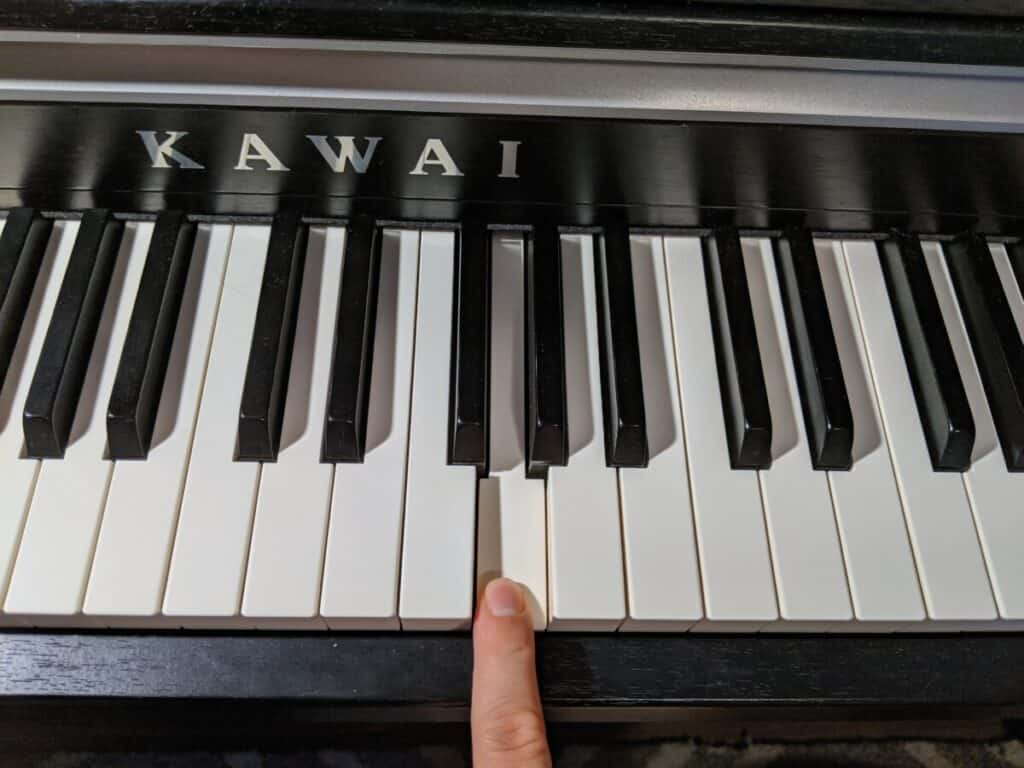
Here is A on the trumpet
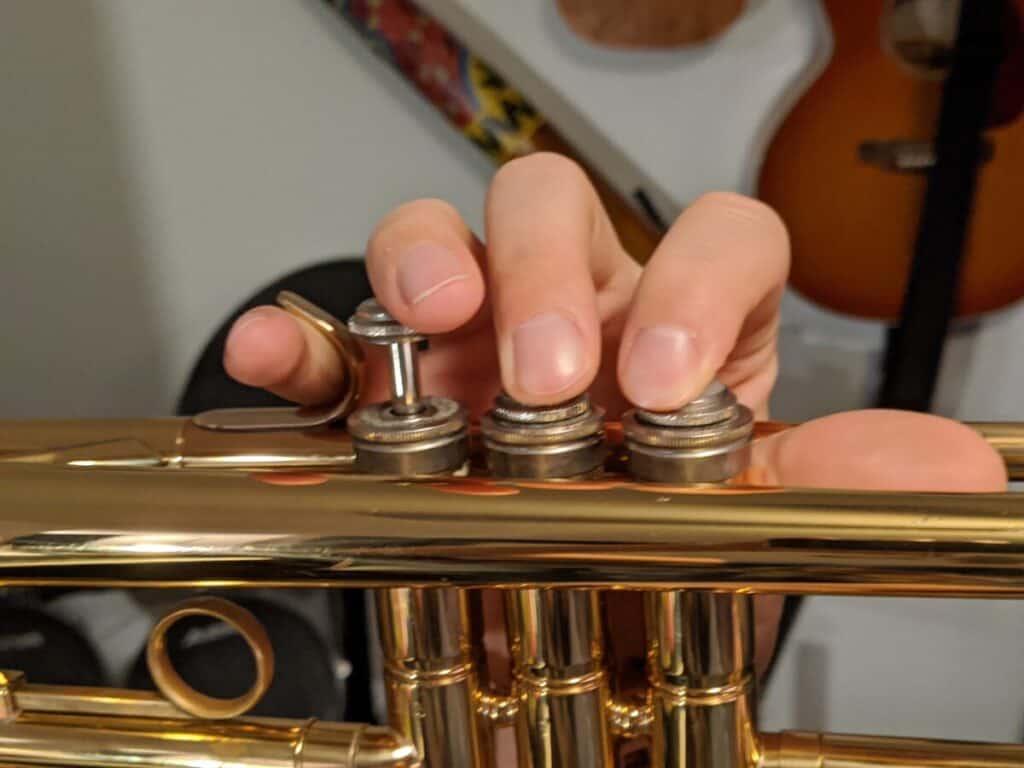
Concert Bb (B flat):
Concert Bb on the piano is C (open position) on the trumpet.
This is a decent note to tune to, but the starting note of the C major scale for a trumpet is a little too low for tuning since it’s almost at the bottom of the playable range of beginner trumpeters. Furthermore, if you go 7 notes higher to the next C (Middle-C), it’s a little high for beginner trumpeters.
Once you have a lot of practice and can play up to high A and high C, this is a fine note to tune to and will be in about the middle of your playable range.
You can also hold the trumpet with your left hand while tuning. Yay!
Here is B flat (also shown as Bb) on the piano:
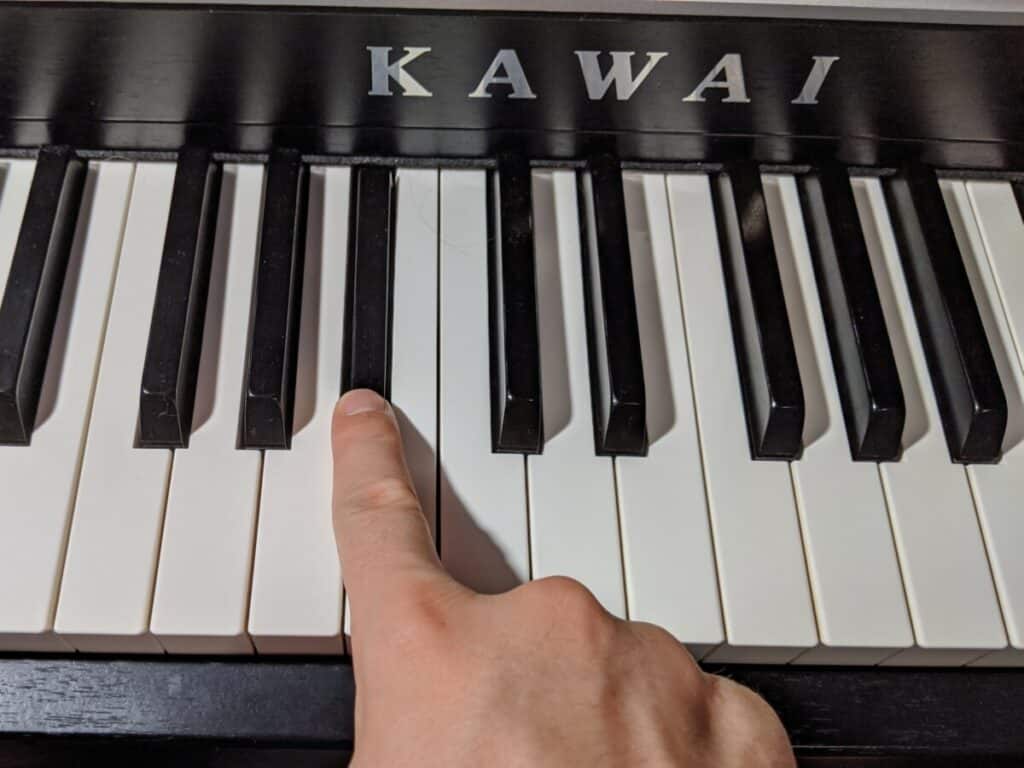
Here is C on the trumpet

Concert C: Worst
Concert C on the piano is D (Valves 1 and 3 for Low-D or just 1st valve for middle-D) on the trumpet.
Concert C is convenient for many other instruments for tuning but it is not convenient for trumpet players.
If you’re a beginner this is probably the worst note to tune to because low-D uses valves 1 and 3. Valve 3 has an interesting issue where it is out of tune on the Low-D–so trumpet players will often pull out the 3rd valve while playing. Unfortunately this makes tuning impossible.
Furthermore, you’ll have to hold the trumpet with your right hand–while not too hard, is a bit more tricky.
Middle-D is not a bad note to tune to, but it’s a bit high for beginner trumpet players and so you’re likely to be out of tune for the rest of the notes you’ll play if you tune to this note.
Here is C on the piano:
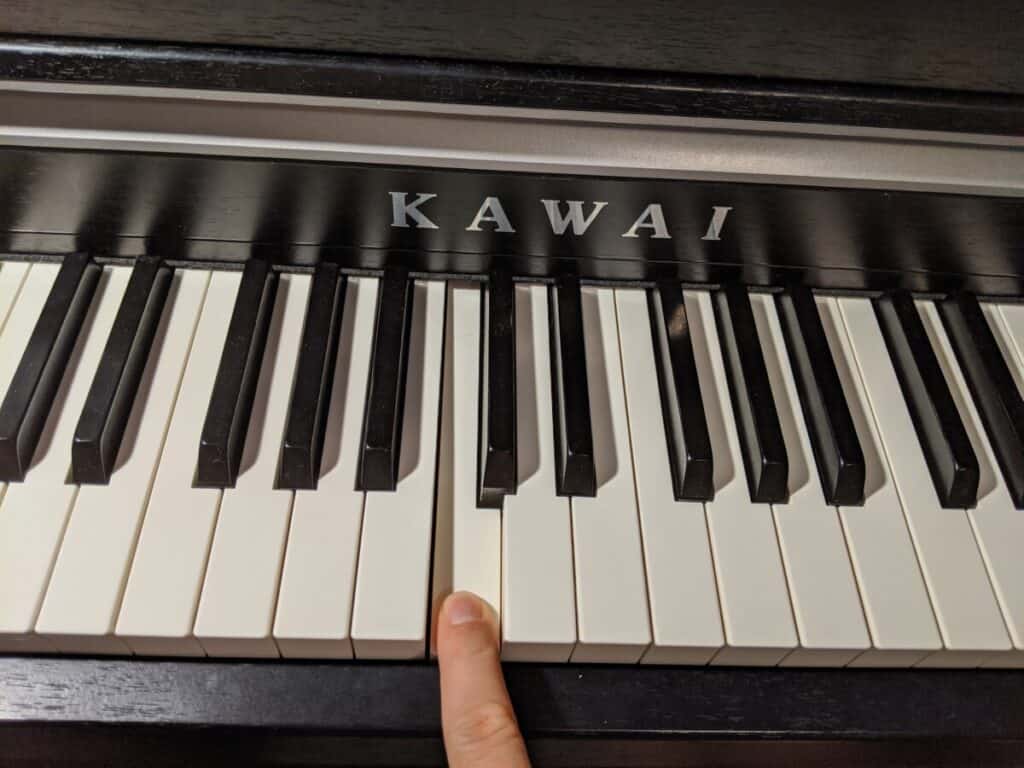
Here is Low-D on the trumpet:
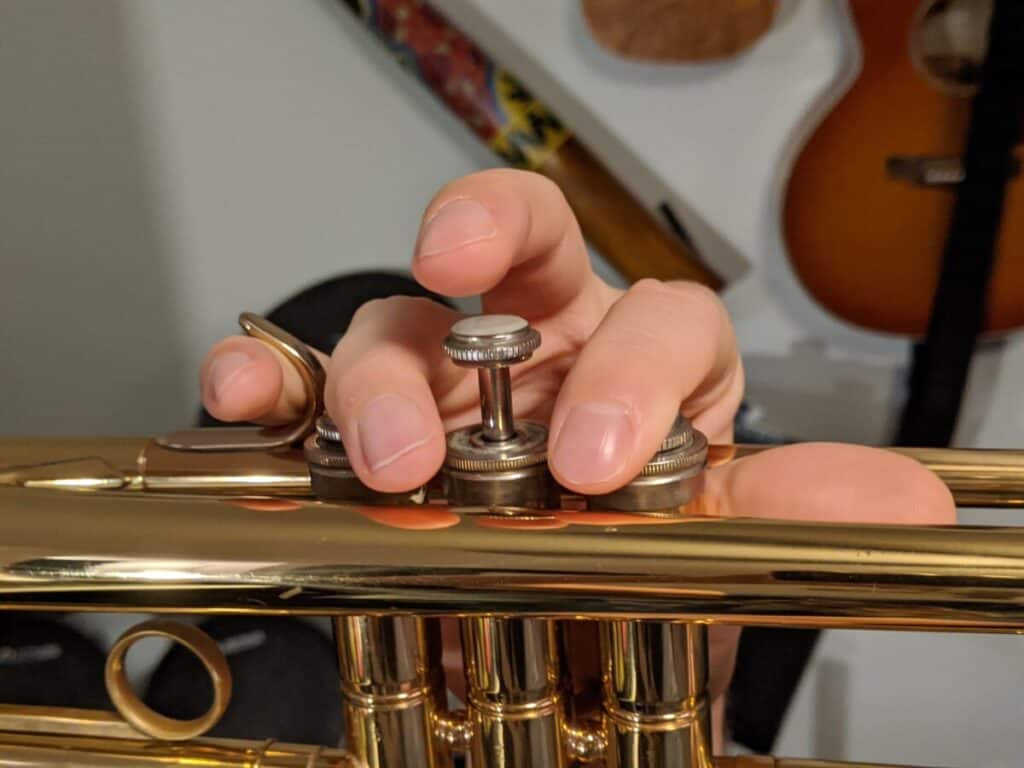
Here is Middle-D on the Trumpet
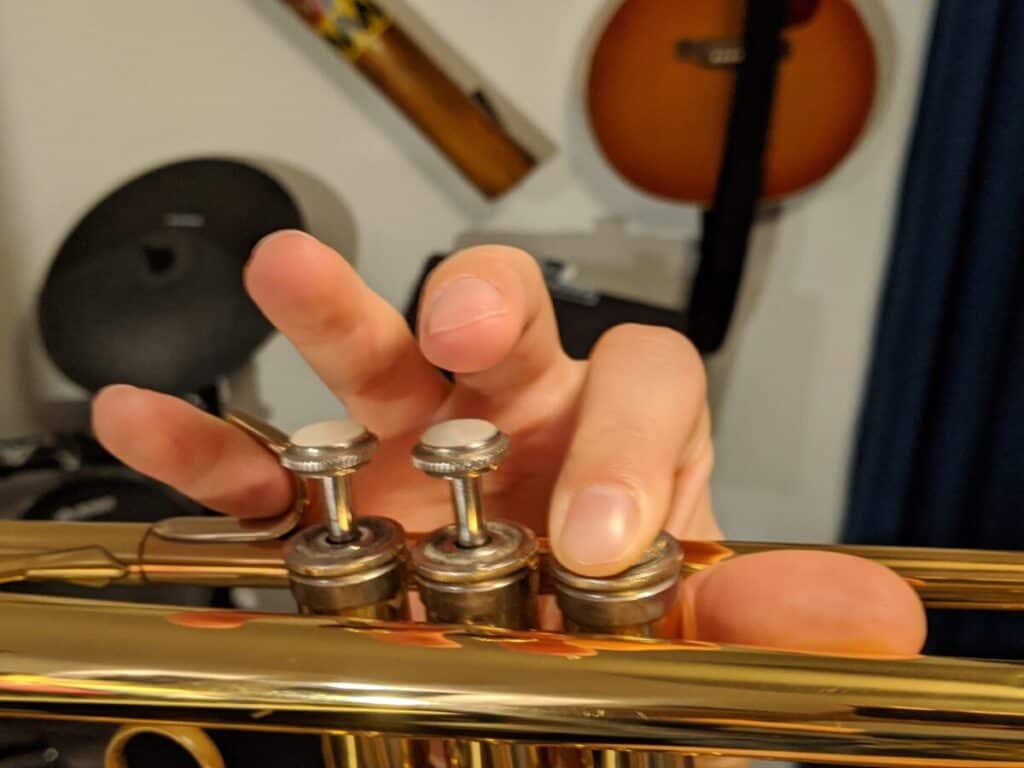
Step 3: Play the Note On the Trumpet
I guess this seems obvious, but you’ll need to play the note you’re trying to tune to. Check out the valve fingerings in the pictures above to know which note you should be playing on the trumpet.
If you’re tuning to Concert F on the piano, you’ll play G on the trumpet with the open position.
Don’t play too loud, don’t play too soft. I’d say a mf (mezzo-forte) is a good volume to play to. mf is the conversational tone of the music world. When we talk with our friends in a quiet room it’s usually around mf.
It’s important to learn to play with a consistent tone without wavering. If you’re wavering it will make it more difficult to tune. No worries if you don’t get this your first time, it takes practice.
Step 4: Match the Pitch of the Piano
You’ll need to repeatedly play the note on the piano to keep the reference tone in your head, and you’ll have to continue to play the trumpet while you’re doing this.
Use the opposite hand that isn’t holding the trumpet to adjust the tuning slide. If you’re tuning to Concert F with the open position, this will be your right hand.
If you’re tuning to Concert G, then you are holding the trumpet with your right hand and so you’ll use your left hand to adjust the tuning slide.
There are two methods you can try.
- Just try and adjust the tuning slide directly to the pitch you want. If you play a lot and you kind of know where your tuning slide needs to be, then this will be second nature. You’ll know when your trumpet is cold it goes out of tune and you’ll know how to adjust for that.
- Purposefully pull out the tuning slide too far and slowly push the tuning slide in until the pitches match.
Method number 2 is a great way for beginners to learn how to tune. It’s actually a very complicated process (even though it can feel 2nd nature after some practice). If you pull the tuning slide way out, you can more easily hear how different the trumpet sounds from the piano.
As the notes get close together as you push the tuning slide back in, your brain will more easily hear the difference even as the notes get closer and closer together.
The notes are out of tune when you can hear a beat, which is like a rhythmic thumping when two notes are close but still out of tune.
When your trumpet is in tune, then you can’t hear a beat and the pitches seem to match.
How To Tune The Trumpet With Any Instrument
So that’s how you tune a trumpet with a piano–but if you don’t have a piano you can still tune your trumpet. You can find a YouTube video (like this one) or any online virtual keyboard or any other instrument that plays a Concert B4b and then tune your trumpet to that note.
I recommend tuning to Concert B4b if you have experience playing the trumpet, if you’re new I recommend tuning to Concert F4. (both of these are open valve positions on the trumpet, notes C5 and G4 respectively).
